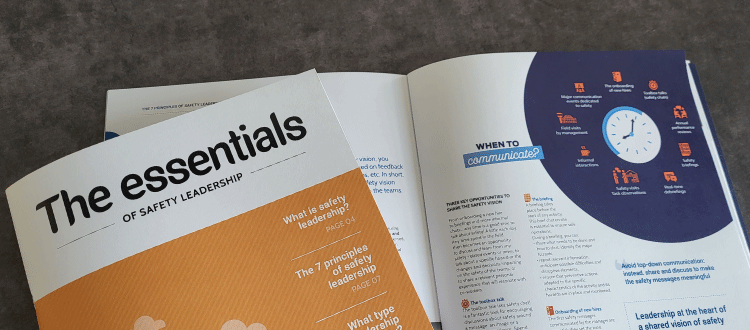We’re all safety leaders, aren’t we? Towards distributed safety leadership in companies
 We’re all safety leaders, aren’t we? Towards distributed safety leadership in companies
We’re all safety leaders, aren’t we? Towards distributed safety leadership in companies
For many companies, safety leadership is exclusively seen as a ‘managerial’ concern. Of course, while all of the managers in the company’s hierarchy are key actors, we can go further, and encourage new safety leaders to emerge in all departments. When leadership becomes distributed, at all of the company’s levels and in all of its departments, we can say that the organization has a mature, deep-rooted safety culture. And the icing on the cake? It is a key driver of agility and resilience in an increasingly complex and uncertain industrial world.
Why safety leadership isn’t just for line managers
Leadership is typically seen as a managerial skill. No surprises there! Managers at all hierarchical levels are key actors in organizational processes. They can motivate their teams, drive home safety messages, ensure the smooth flow of information, and create a climate of trust that supports safety.
But it doesn’t have to stop there. Other actors can develop safety leadership skills. In practice, safety leadership must go beyond the managerial sphere. There are many other roles within the company that impact risk management, even if their holders are not always aware of it: employee representatives, staff working in human resources or purchasing departments, engineers in design offices, field operators, etc. Safety leaders are hiding at every level of the company... and we need to find them!
Everyone is a safety leader: true or false?
Everyone is a safety leader, of course not… but companies need safety leaders and influencers at every level of the organization. So how can we go about changing things?
Tailoring the 7 principles of leadership to each actor
Depending on the activity, business, department and hierarchical level, certain leadership principles will be more important than others.
For example, employee representatives are key actors when it comes to facilitating dialogue and ensuring the smooth flow of information within the company. On the other hand, we expect senior managers to create and share the safety vision. Like line managers, they must exemplify the values and principles underpinning the company’s safety culture in their strategic trade-offs and decisions.
Each actor needs to find his or her own model of safety leadership, depending on what their job is, their ability to make decisions and change practices, and what is going on in the company.
Some examples
Employee representatives
Employee representatives play a key role! Ongoing dialogue with trade unions and employee representatives must be an integral part of any safety culture.
An employee representative who is a safety leader:
- understands the reality on the ground, and the difficulties
- breathes new life into safety issues
- ensures the smooth flow of information, fights against organizational silence
- supports safety initiatives by driving the dissemination of information
- etc.
Human resources departments
Support personnel can also be safety leaders!
An HR employee who is a safety leader:
- brings attention to training courses on the prevention of major corporate risks
- ensures that each new recruit has a mentor
- integrates safety criteria into annual performance reviews
- asks potential recruits about their safety vision
- etc.
Field operators
Safety leaders can often be found among technicians and operators. These front-line staff can be the drivers of concrete, day-to-day safety actions on construction sites, in factories and at manufacturing facilities.
An operator who is a safety leader:
- can justify the need for safety measures when interacting with customers or subcontractors
- motivates colleagues to adopt virtuous behaviors and shared vigilance
- underlines the importance of the company’s safety culture to new entrants
- contributes to risk management by making proposals, and reporting important safety information to managers
- etc.
And everyone else!
Many other actors have a part to play: purchasing, management and finance departments, maintenance and logistics, sales, prevention specialists, HSE, safety experts, engineers in design offices, communication departments, etc.
In these uncertain times, identifying new safety leaders is a key asset
In today’s uncertain times, traditional models of safety leadership are being challenged. Top-down leadership has become outdated, largely because the vision of what needs to be done has become unclear! In a context where resilience and agility are key advantages, the time has come for more distributed leadership.
What does safety leadership look like in a changing, complex and uncertain world?
---



